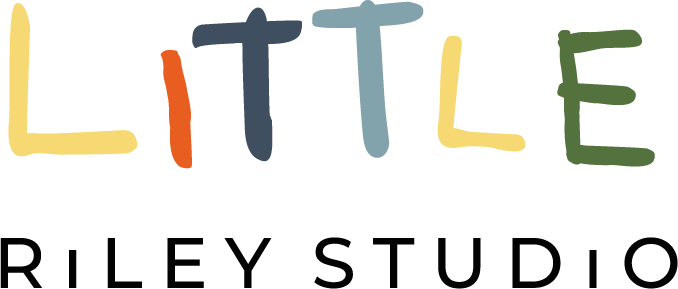In this months #MeetTheMaker series, we introduce you to one of our partners from our Collection 06 supply chain to celebrate both the people who make our clothes, and also tell you a bit more about what is involved in their process.
For Fashion Revolution week this year, we wanted to highlight what’s in our clothes, and specifically focus on the process of creating our Linen which features across collection 06, by introducing the mill that we chose to work with.
Fashion Revolution has become a global movement, pushing the fashion industry to clean up its act, driving a radical shift in our relationships, with each other, our clothes, fashion industry supply chains and with the natural world.
At Riley Studio we aim to be fully transparent and show the traceability of each of our garments, the hands they go through and the processes involved in creating the final product which you will eventually wear. We want to put the value back into clothes, to ensure a slow circular fashion economy, where clothes are designed to be worn for a lifetime.
Where does Linen come from?
Woven from the flax plant, linen is a natural and biodegradable product. However, we still wanted to make sure that we chose a Linen mill with a 100% organic process.
Flax is a natural recyclable fibre which needs no additional irrigation, relying solely on rain water. It is also one of the most sustainable fibres as every part of the plant is used and there is zero waste.
As a breathable, lightweight and strong material, it only gets better over time and naturally has a low environmental impact.
Who is Libeco and why did we choose to work with them?
Libeco is a linen mill based in Belgium and we chose them as our partner to produce our linen for Collection 06 due to their robust sustainability credentials. They consider their impact on the environment at every stage of the production process, from the field to the end product their manufacturing processes are completed with maximum respect for the environment they inhabit.
Libeco have been a carbon neutral company since 2014 and reduce their emissions by using renewable energy, solar panels, LED instead of fluorescent lighting, reviewing their waste management, vehicle fleet, heating and air conditioning. Every ton of CO2 that they cannot reduce per year, is compensated with financial support for an accredited climate project in Uganda. This project makes and sells energy-efficient stoves, each of which reduces annual CO2 by 1.4 tons. It improves the population's health and combats deforestation.
Libeco linen is grown by organic farmers, and is spun, woven and finished without the addition of any harmful products whatsoever. Plus, all their processes are GOTS certified.
Libeco Linen’s craftsmanship, from fibre to fabric.
Artisans in their region, Libeco have been working with flax for centuries. Their skills and expertise have been passed on from generation to generation. From field to fibre, from yarn to fabric, the making of linen is a story of passion and craftsmanship.
They aim for the lowest impact, without the use of pesticides, treatments or dyes. It requires no added irrigation and relies on rainfall alone for growth.
Where is the flax grown?
The flax plant grows best in the north of France, in Belgium and in the Netherlands. This region’s rich soil and mild North Sea climate, where sun and rain alternate, are ideal for growing a fiber that is known for its quality.
What is Libeco's process?
Step 1: Flax Season
At the beginning of spring, in March, the flax farmers prepare to sow the fields. They follow the changing of the seasons closely and wait patiently until the time is right. After merely 100 days, the flax will have reached a height of 1 meter.
The blooming flax attracts many people to the fields every year. By the end of June the fields turn blue for a couple of days, after which the flowers disappear.
Step 2: Harvest
In July, when the flax is harvested, it is pulled rather than cut. The flax is laid on its side and placed on the field in parallel rows, in a process called retting. Mother Nature has a crucial role in the retting process where the sun, dew and rain alternate. Micro-organisms dissolve the pectins and loosen the fibres of the flax. The soil also plays a part in the process. It contributes to the typical beige colour of flax.
Step 3: Strutching
Large rollers break the woody stems of the plants to separate the fiber from the shives (the wood particles from the stem). The recovered shives are further processed into chipboards or animal bedding. The scutching tows are used for spinning coarser yarns or as raw material for the paper industry.
Step 4 : Hackling
Thousands of pins comb the flax until only the purest fibre remains. The remaining short fibres are separated from the longer fibres, the line. The line is used to produce the finest Linen.
Step 6: Spinning
The spun yarn is wound on a spool. A ring travels around the spinning spool at a high speed to ensure an even distribution of the yarn. This brings together the different fibers into a yarn.
Step 7: Finishing
A linen fabric is finished to bring out its unique qualities and to add to its natural patina.
Linen has a natural flax colour. The exact colour depends on the sun exposure and the influence of the soil during the retting process.
“It is our mission to work with flax farmers, spinners and finishers to create the highest possible added value with the smallest possible ecological footprint. We always choose the most sustainable methods out of respect for our raw material.”
From Plant to finished product, we are so proud to present our linen pieces from Collection 06 in collaboration with Libeco.
See our full linen collection here


Back to Our Journal